Tourmalet, Aubisque, Croix de Fer, Izoard, Galibier, Alpe D’Huez, Mont Ventoux, Puy de Dôme ... What are the most decisive ports of the tour and where does its hardness lie? What did the most memorable sentences issued and what climbers entered the legend on their ramps?
Since the mountain began writing in 1910 the most epic pages of the Tour, with the first pyreneic conquests of Octave Pazize, the great colossi have captivated the fond of their ability to give and remove the glory, and for being the scene of many of many of many of The greatest deeds of cycling, to the point of linking their names that of the great cyclists who made history on their ramps, in a kind of magical alliance between man and the nature that has been lasting over time.
Knowing more about the ports and their heroes, exploring their keys from the most objective to the subjective, will make us better understand why the mountain is the most exciting challenge that every year the
Route forces in it
Tour de France.
The Mountain of the Tour exercises such a special magnetism that good fans expect impatient every year to know which ports will be included in the next edition and how they will be distributed, if the Alps or the Pyrenees will first be uploaded, or which ends high there will be or What will be the highest port.
It is like a universe with its own identity that obeys a very particular logic, with a terminology that we must know and analyze, if we want to know in advance where and how you can play the yellow jersey. Let's look at some keys:
How the port categories are valued
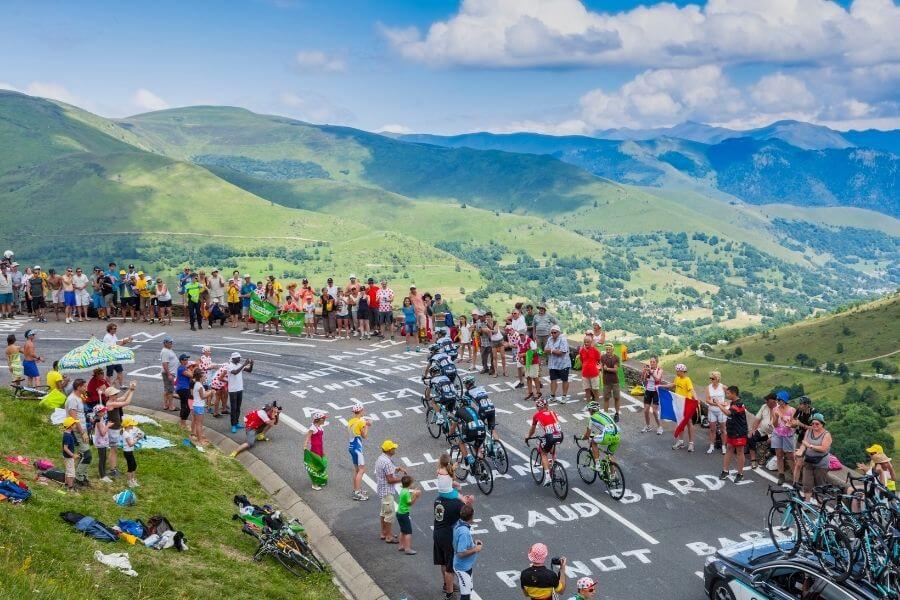
Often the fan will have heard that this port scores
out of category and that of beyond, second or third. The logic of each one immediately relates these categories to the degree of hardness of the increases, with the simple observation that the most demanding ports are those that are described with the lowest ordinary. And so it is: the Tour de France contemplates five categories that are going
in crescendo, from the fourth category that catalogs the milder increases.
Thus, the third and second category dimensions will be the following levels, before completing the conventional scale with the first category ports.
But what about the fifth category that we have left? The Tour of France scored first -class to the most historical and demanding ports until the 1978 edition, but then the organization observed that the large number of increases scheduled with that cataloging equated the most historical ports and most demanding altimetric data, with others more bearable.
All were in the same sack of the first category, but there were differences of hardness on which it was necessary to intervene. The Tour de France decided to do so in 1979, when he created the
Hors Catégorie - Category out to distinguish the
Cols tougher and complement the conventional scale.
There is no rigid norm, but it is accepted that a high mountain stage is the one that saves accumulated unevenness above 4,000 meters
The degrees of hardness determine the categories but, how is the hardness calculated? Well, appealing largely to the objectivity of mathematics to calculate what is called the difficulty coefficient. This parameter is obtained from the altimetric data of the ports, which are basically:
- The length of the climb.
- The unevenness to save -expressness between the altitude at the beginning of the port and that of its peak.
- The inclination of the slopes, whose average percentage is obtained from the first two, using a simple formula: divide the ascended meters- the unevenness- between the meters traveled -longitude-, and multiply the result by 100.
Let's serve a practical example: the
Col du Tourmalet, from its sainter Marie de Campan slope, it has 17.2 kilometers of ascension, in which 1,268 meters of slope are saved. If we apply the formula, we would divide 1,268 meters by 17,200 and multiply the result per 100, to obtain an average slope of 7.37%.
Knowing the data to be taken into account, let's see how they combine to obtain the difficulty coefficient that will determine the category of each port, based on the base that there are several ways to calculate it. One of the most used is the web formula
Mountain port altimeters, which incorporates an Excel table in which the different altitudes that are reached kilometer per kilometer are inserted to obtain the average slope of each of them and their corresponding coefficient, resulting from combining the first two data.
Logically, the more average pending has a kilometer, the greater its coefficient, and it will be the sum of all of them that gives the general coefficient of the port, which will then move to an equivalence table to establish the categories.
Attending to this formula, the Tourmalet would have a coefficient of 315 and would far exceed the minimum limit established to score a port as
Hors Catégorie, or special category. From there down, the equivalence table is establishing different sections that decrease the categories depending on the coefficients, until reaching the lowest step: that of the fourth category levels.
The Tour de France has its particular scale to categorize the ports according to mathematics, but not trust the coldness of the numbers, but also takes into account aspects with more load of subjectivity. An example is the strategic location of the ports, which in some cases can increase in category the more at the end of the stages they are, or if their altitude constitutes a milestone within the route, as can happen with the highest port of each edition, the one that grants the
Souvenir Henri Desigrange, with a separate economic endowment and more score for the mountain prize.
Each great return has its own methods, and a paradigmatic example is that of the Giro de Italia, where there are no off -category or special category ports, but they all agree on something: the highest category encompasses the most historical ports and Hard
What is the difference between mountain and high mountain?
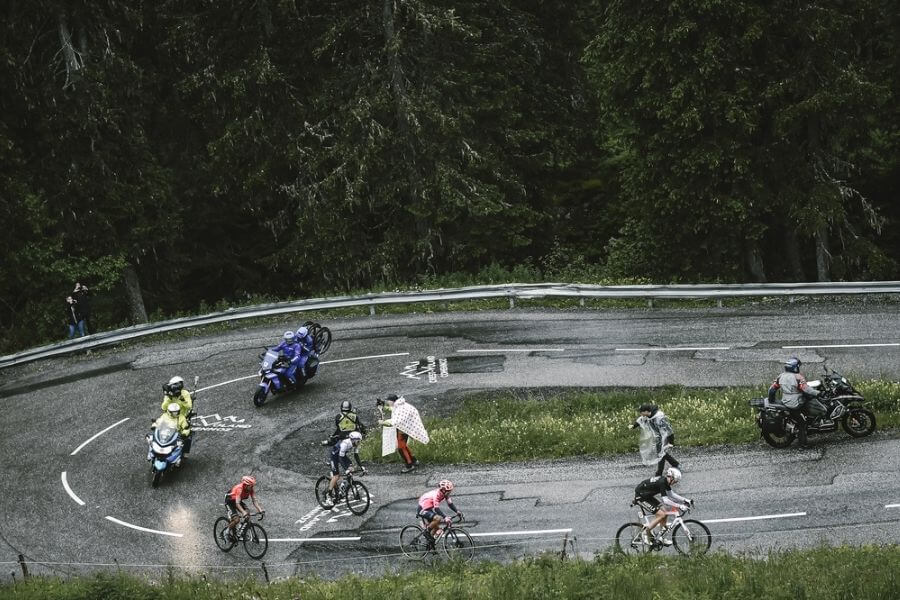
The mountain varies in each edition of the Tour de France: there are years with more hardness load in the Alps than in the Pyrenees, or vice versa; and others in which the secondary mountain ranges that constitute the central massif, the swearing or the vosgos have a weight comparable to that of either of the two main ones.
The number of mountain stages and their scheduled port density are the factors that determine global hardness, always making the precision that they are the runners themselves, with their rhythms and with their combativity, which finally have the last word at the time at the time to make a career more or less hard.
But there is a starting point. As with the ports, the stages are also classified, and they are even given a coefficient based on factors such as the accumulated slope that save, the total number of ports and the requirement of the increases that are located at the end, especially if they are of
Hors Catégorie.
Under these premises, medium and high mountain stages can be differentiated, concepts that, rather than depending on the altitude that their qualifiers seem to point out, have to do with the accumulated hardness and its strategic location. There is no rigid norm, but it is accepted that a high mountain stage is the one that saves accumulated unevenness above 4,000 meters, programming at least two large ports and placing one of them as an end or, failing that, very near the goal.
In a tour there are usually several stages of these characteristics and the one that presents the highest alimetric data is the one considered as
Queen stage, especially if it is also the one with the greatest mileage.
That the final stretch is hard is the key factor of the high mountain, since there have been cases in which the location far from colossal goal such as the Tourmalet or the Aubisque avoided such consideration. And on the opposite side, medium mountain stages have been made, plague demanding ending capable of encouraging attacks.
A highly remembered example is the famous stage of the 1995 Tour of France with end in Mende, where an offensive of the Eleven team put in check the yellow jersey of Miguel Induráin. Melchor Mauri, one of the pawns used by Manolo Sáiz in that choral attack, gave one of the keys: "
Faced with a hard stage, people mentally have to suffer and endure to the fullest. But that day did not seem like a stage of excessive hardness, there were no large ports. The majority of runners did not go out with the mentality of having to suffer and that is why they did not endure the rhythm” What happened in the half mountain of the central massif teaches that there are times when everything is more a matter of mentality than of percentages and unevenness.
The nightmare of sprinters in the mountain stages
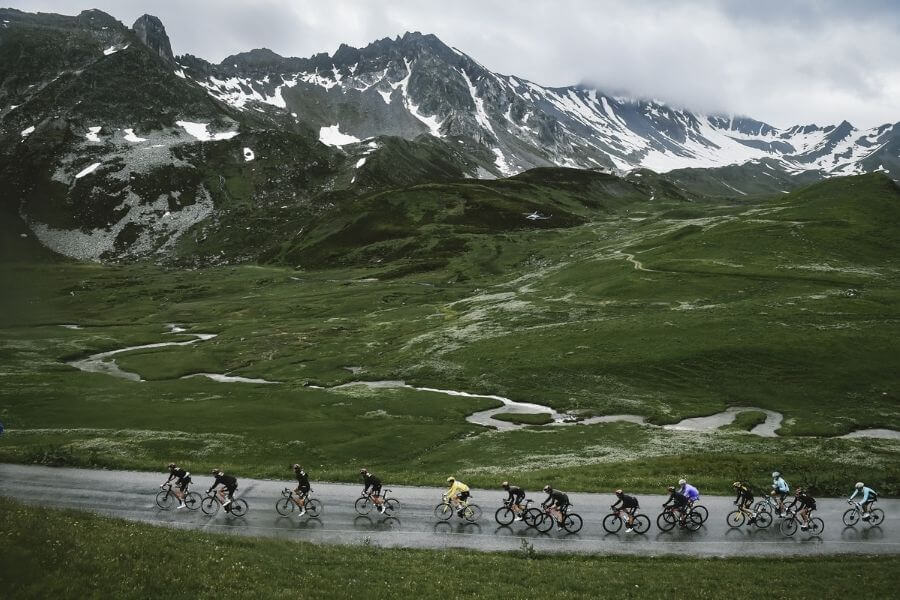
We have talked about the rhythm of cyclists as a key factor that determines the real hardness of one stage, but it remains to be seen another of the most substantial consequences that can be supposed for the race: the call
out of control.
All races include in their regulations some time limits to cover the tours and the Tour de France is no exception. Its time control of each stage fixed a time limit schedule that, if exceeded, causes the automatic disqualification of cyclists who have not fulfilled it.
This is a big problem for sprinches and those runners whose physiognomy is away from the finesse of the climbers, and forces them to handle a specific strategy to avoid elimination based on complying with the rule.
He out of control It is established based on three parameters: the type of stage faced, the time and average speed used by the winner of the stage
But how do they know how long they have to reach the goal? The answer is a variable that is calculated based on three data: the type of stage faced, the time and average speed used by the winner. For the first, the Tour of France gives a coefficient for each of the seven types of stage that it contemplates, and assigns a limit percentage to each of them that always depends on the average speed of the winner. The harder the stage for rhythm and times, the greater the margin of sprinters to avoid the
out of control.
How the out of control coefficients are calculated
The seven types of stage and the calculation that is made in each of them is as follows:
- • Flat stages, of coefficient 1: A fork is applied that goes from 3% margin over the winner's time if the average speed has been equal to or less than 36 km/h, 11% if the 50 km/h are exceeded.
• Low mountain stages, coefficient 2: The fork fluctuates between 6%, if running 35 km/h or less, and 18% if the 46 km/h are exceeded.
• Medium mountain stages, coefficient 3: 10% of the winner's time is applied if it is 35 km/h or less, and up to 18% are reached if it runs more than 46 km/h.
• High mountain stages, coefficient 4: The fork also moves from 10 to 18%, but the average speeds that comprise it fall to 29 and 40 km/h, respectively.
• Short mountain stages, coefficient 4: They maintain the percentages of 10 and 18% to delimit the fork, which in this case contemplates some average speeds of the winner equal to or less than 29 km/h, and greater than 36 km/h.
• Individual counterreloj, of coefficient 6: A margin is applied to the out of 25% control over the winner's time.
• TEAMS BIRT, COEFFICIENT 7: The margin is 30% on the chrono marked by the winning team.
Each edition of the Tour of France has its own table in which the relationship of all stages with its corresponding coefficient, information that, as we have seen, is very valuable for sprinters, but also for cyclists who are in trance of recovering from A fall, or gregarious that intends to regain forces by reserving for example in a time trial. S
However, the great danger of
out of control It is on the mountain and, depending on it, the so -called sprinter grupete calculates the rhythm to which you must travel to meet the corresponding percentage of time. Hence we see the mountainous goals in the last place for large balls, when ahead they have been entering one or very small groups.
Everyone in the tail car knows that they could never crown with the climbers a colossus of the tour mountain and autonate to a kind of crucis road with calculator.
The most mythical ports of the Tour de France
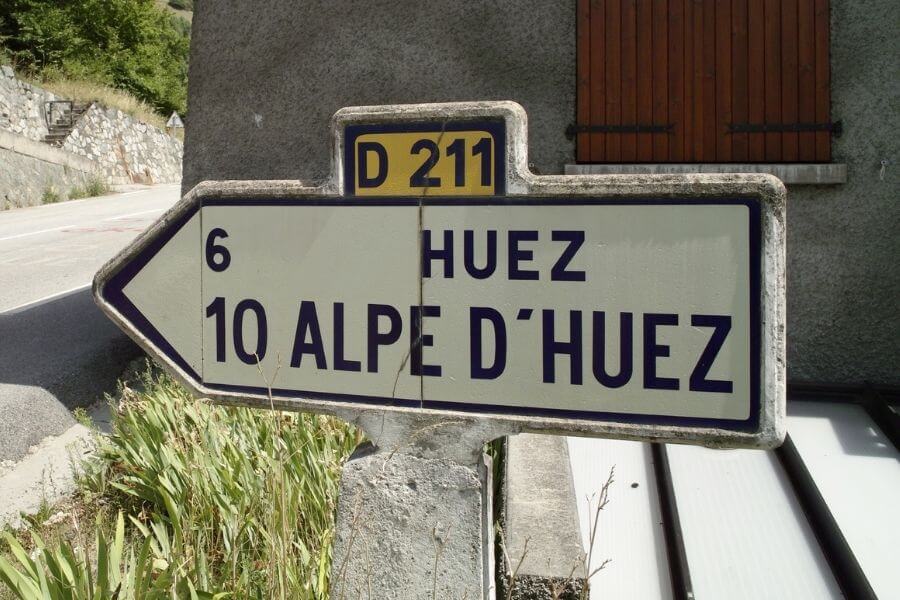
The list of the mythical ports of the Tour is never closed. Beyond the great classics that are already centenary, the race has been incorporating new increases in which episodes of great importance have taken place, even without the need to present a hardness of
Hors Catégorie.
Minor ports such as Pra Loup or Les Arcs were respectively the sports tombs of two pentacampeones; Eddy Merckx and Miguel Induráin.
But as in football, where it is more beautiful to win in a great stadium and before a great team, sentence a Tour of France in a legendary port is something that gives that deed a very special touch.
We have chosen seven mythical ports that have been the scene of memorable episodes:
Col du Tourmalet (Pyrenees, 2,115 meters)
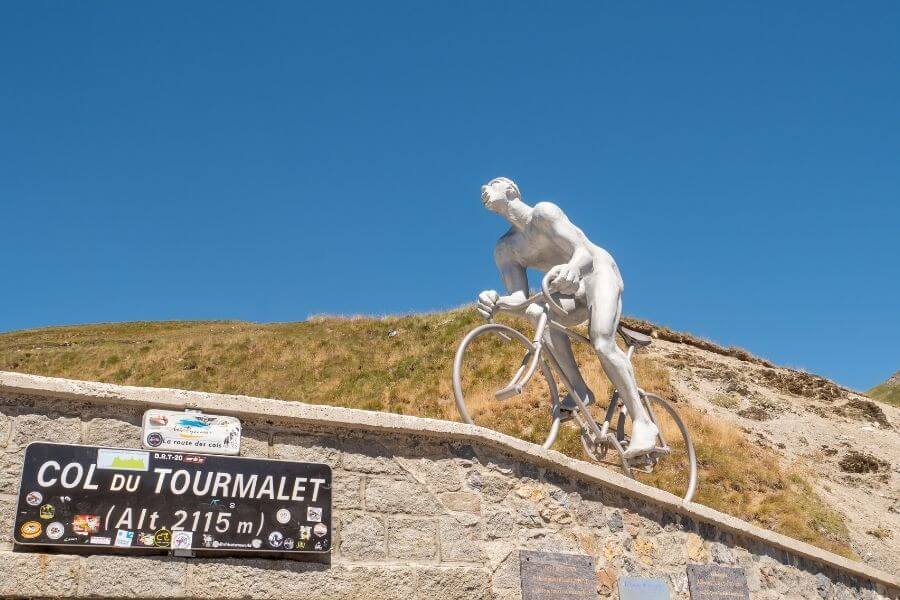 The Tourmalet was the first major port to rise in the Pyrenees
The Tourmalet was the first major port to rise in the Pyrenees, and the first that led to the race above 2,000 meters, in the 1910 edition. Its great peculiarity is that its two aspects are practically symmetrical: from Luz Saint-Sauveur, 1,405 meters of slope are saved in 18.8 kilometers, at an average of 7.5%; While the ascent from Sainte Marie de Campan has 17.2 kilometers and saves 1,268 meters, at an average of 7.4%.
The Tour has crossed the great colossus near ninety times, the one in its history, almost always as a port of the stage of the late stage of stage in near Pyrenean localities, or of late classics, such as light burning or superbagnéres. Federico Martín Bahamontes holds the record of having crowned him in the lead four times, followed by great names such as Jean Robic (3), Julio Jiménez (3) or Fausto Coppi, who first went through his top in his two triumphal tours of 1949 and 1952 .
The great Pyrenean colossus also went down in history for his descent, when Miguel Induráin attacked in the first sections of the descent and began the great escape that led him to dress for the first time yellow in the goal of Val Louron.
The Tourmalet turned a hundred years in 2010 and the Tour of France decided to commemorate the ephemeris programming a double rise in two different stages. In the second it was the final race and won the Luxembourgs Andy Schleck, who entered Alberto Contador.
Col du Galibier (Alps, 2,645 meters)
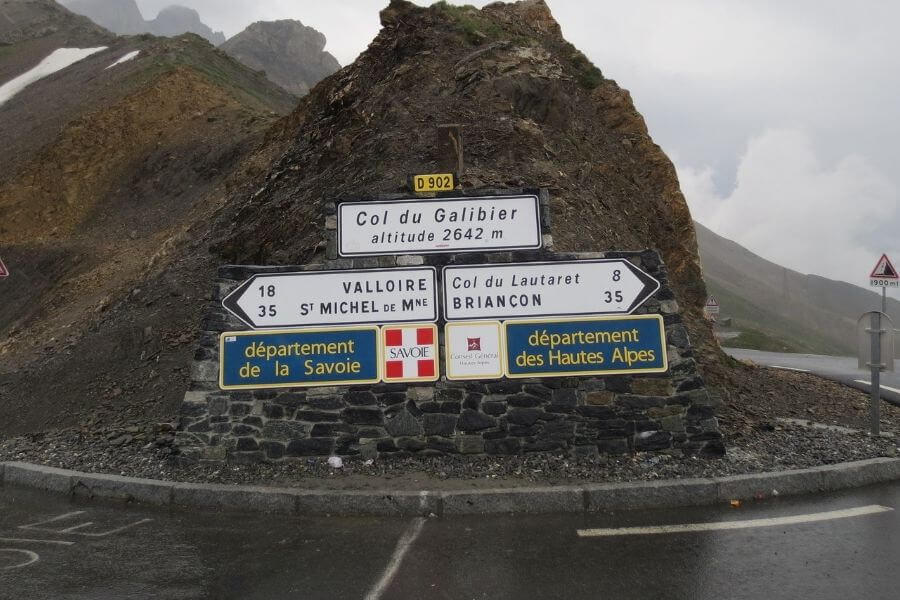
It was the first great Alpine colossus, introduced in the 1911 edition. Since then it has become the second port most used by the Tour, after the Tourmalet. The Galibier is considered the most strenuous port if it is faced from Saint Michel de Maurienne and is chained to the col du télégraphe.
For that northern slope dates back 1,933 meters of unevenness in 35 kilometers to 5.48%, an average slope that is distorted by the five kilometers of descent that carry from the top of the télégraphe to the town of Valloire. The differential section of the Galibier begins seven kilometers from the top, where the slope no longer drops from 8% and the altitude raises.
Three Spaniards, Bahamontes, Julio Jiménez and Federico Ezquerra, lead the palmarés with two steps in the head, matched with the Luxembourg Charly Gaul and the French Henry Pelissier and Honoré Barthélémy. And three Italians were exhibited on their ramps to win the Tour: Gino Bartali (1937), Fausto Coppi (1952) and Marco Pantani (1998), whose five kilometers attack of the top, missing seventy for the goal of Les Deux Alpes, It led to one of the most shocking deeds of the modern era of the Tour de France.
Col d’Aubisque (Pyrenees, 1,709 meters)
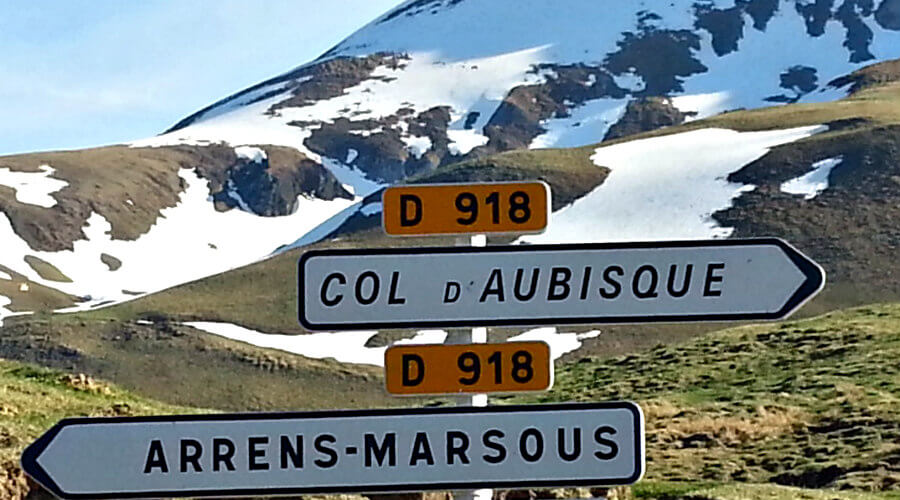
The second most uploaded Pyrenean Puerto in the history of the Tour, since it premiered with the Tourmalet in 1910. Its summit already became famous that year with the historic phrase of Octave Lapize, cursing the organizers for including so much hardness.
The Aubisque presents its toughest slope from the town of Laruns, with 17.3 kilometers of 6.9% rise, average slope that exceeds 8% in its final seven kilometers, to save a total of 1,198 meters of unevenness.
On the other hand, the one that comes from ferriéres, the climb to Aubisque is chained to that of Col du Soulor, whose road is twelve of the twenty -one kilometers of ascension, hence the Pyrenean myth has come to score even second category.
Federico Martín Bahamontes spent four times first at his top and holds the record, followed by Charly Gaul, Julio Jiménez and Fausto Coppi. The Italian gave two climbing recitals on his ramps in his two triumphal tours of 1949 and 1952. Another great champion like Miguel Induráin also crossed him in the lead in 1989, before his five -tours stroke.
Its marked Port Port status has granted a more selective than decisive role, although two stage finals appear in its history: in 1985 Stephen Roche won a 52 -kilometer mini -tap; And in 2007 the Danish Michael Rassmussen did, before being disqualified by the organization for refusing to pass an anti -doping control.
Col d’izard (Alps, 2,360 meters)
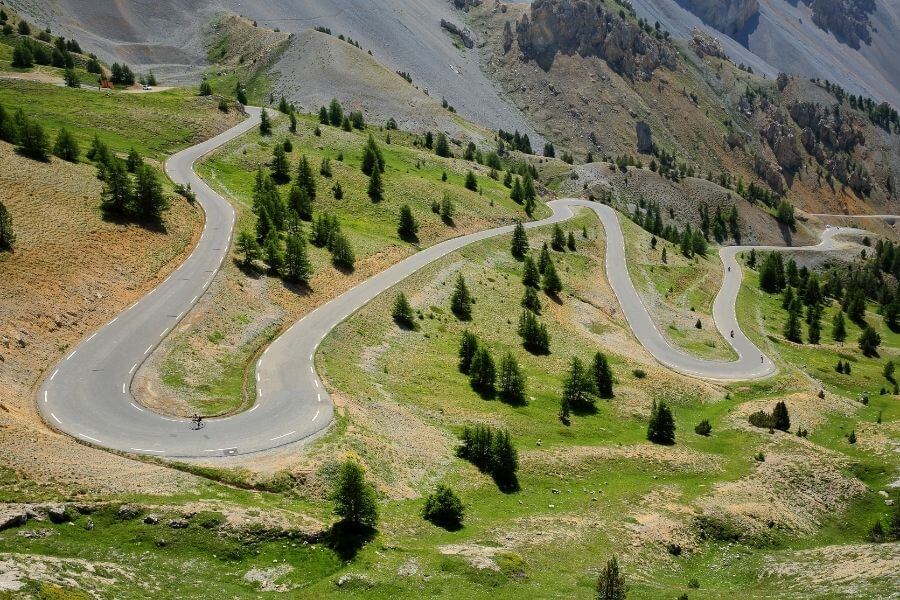
The Izoard is one of the icons of the Tour de France, since Henri Desigrange would premiere in 1922 and the Belgian Philippe Thys, triple champion in Paris, inaugurated his record.
Its most emblematic and famous increase is carried out from the Alpina town of Guillestre, with sixteen kilometers at 6.9% on average to save 1,060 meters of unevenness. It is the aspect of the Casse Déserte, a development that marks the beginning of the very hard final stretch, and in which the monuments to Fausto Coppi and Louison Bobet, the Triple French champion of the Tour that is also the one who has crowned the Alpine colossus in the lead, three times.
Coppi did it in his triumphal tour of 1949 in a legendary escape on the way to Aosta and repeated in 1951. And his great rival, Gino Bartali, he got it before and after World War II, in 1938 and 1948, the years in which He proclaimed winner in Paris.
Julián Berrendero, Jean Robic, Bahamontes, José Manuel Fuente, Eddy Merckx, Lucien van Impe or Claudio Chiappucci are some of the names that complete the Izoard history.
Mont Ventoux (Provence, 1,909 meters)
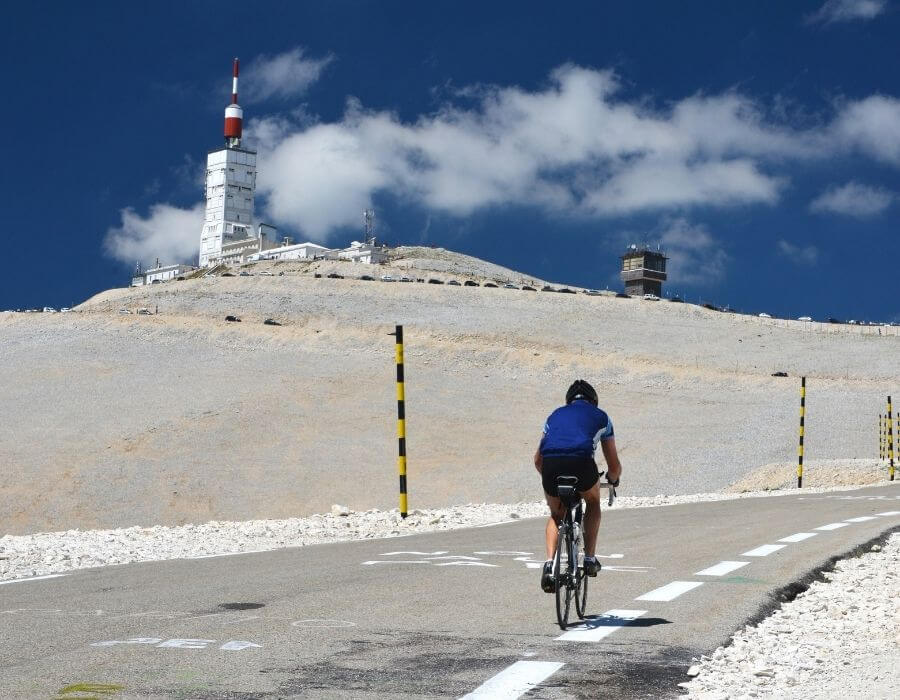
The colossus of Provence is a separate mountain, although geologically belongs to the Alps, and perhaps it is the most peculiar of the tour.
It is a bushy mountain due to the strong Mistral wind that plagues the area, crowned by a military observatory and surrounded by lavender fields.
Because of its hardest slope, from the town of Bedoin, saves 1,588 meters of unevenness in 21.3 kilometers of ascent to 7.4%, an average slope that hardens above 10% in the final stretch, once it is exceeds the famous villa Reynard.
The Mont Ventoux began to rise in 1951 and in his record there are big names, such as those of Jean Robic, Louison Bobet, Charly Gaul, Raymond Poulidor, Eddy Merckx, Marco Pantani or Chris Froome.
The call
Provence giant It has served to clarify the general classification and to crown large champions at its top, but much of its fame is due to the most tragic and dramatic side of cycling: the British champion, Tom Simpson, died on his ramps in 1967 because of An amphetamine overdose mixed with alcohol that had lethal effects when combined with extreme effort and heat.
In 1970, Eddy Merckx needed an oxygen mask as soon as he won at his top. In 2000, the victory of Marco Pantani in the final sprint against Lance Armstrong resulted in a great anger from Italian with the American, to say publicly that he had let him win.
And in 2016, the great public agglomeration at the climb caused Chris Froome to rise a section running on foot after colliding with his bike against a television motorcycle.
Alpe d’Huez (Alps, 1,850 meters)
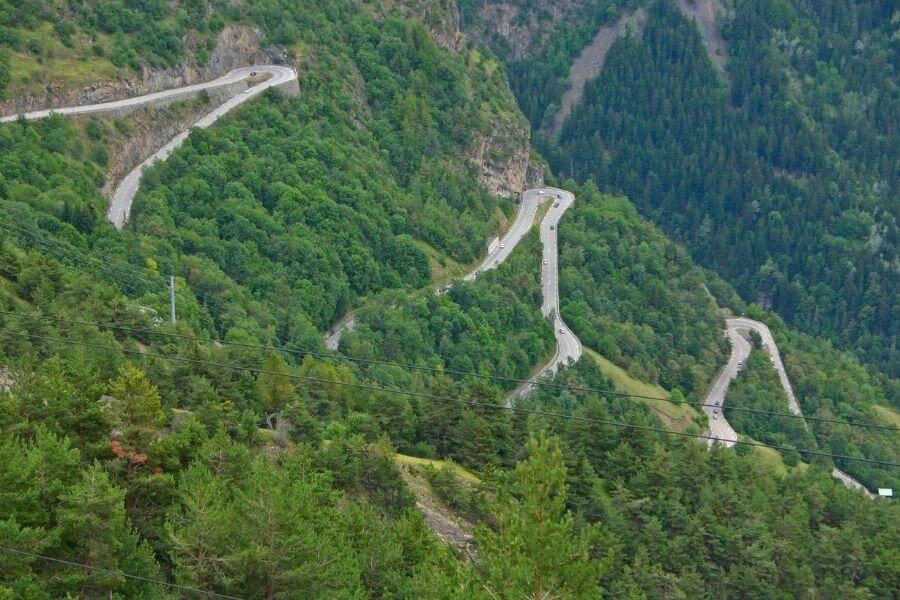
The most famous end began his journey in the Tour de France, with a great escalator exhibition by Fausto Coppi against Jean Robic to win alone at the top and leave his second absolute victory in Paris for sentence.
Il Campionissimo Inaugurated the Alpe D’Huez record in 1952, the year the Tour decided to raise the spectacular port for the first time.
The ascent starts in Bourg- d’aisans and in 13.1 kilometers saves a slope of 1,073 meters, at an average of 8.2%, in a serpent with twenty-one horseshoe curves numbered in decreasing order from the base to the top. Each one remembers the winners in a sign, some twice, since the number of winners began to overcome that of the curves.
Although it seems weird, Alpe d’Huez's horseshoes are a small relief for cyclists, because they do not have barely inclination. The worst of the ascension is each exit from them to the next line, where the percentages are triggered to around 10%.
The legend says that who comes from Alpe d’Huez yellow ends up in Paris, and that maxim was met cyclists such as Bernard Hinault, Laurent Fignon, Miguel Induráin or Jan Ullrich
After the great inaugural triumph of Fausto Coppi, the Tour de France did not return to Alpe D’Huez until 1976, and to erect in one of the mythical colossi of the most modern era of cycling. The eight Dutch victories signed by Jop Zoetemelk (2), Hennie Kuiper (2), Peter Winnen (2), Steven Rooks and Gert-Jan Theunisse until 1989 made the Alpina station known to the Alpina station for years as
The Mountain of the Dutch.
After that time, the story turned to Italy, with the two victories of Gianni Bugno, and those of Roberto Conti, Giuseppe Guerini and a Pantani frame that won twice beating the record of the ascension.
The legend says that who comes out of Alpe d'Huez yellow ends up in Paris, and that max at the hands of Steven Roche in 1987.
Another Spanish, the Abulense Carlos Sastre, starred in 2008 one of the greatest deeds in the history of Alpe D’Huez, with an attack practically from the base that led him to win alone and the yellow jersey that would later take to Paris.
Puy de Dôme (central massif, 1,464 meters)
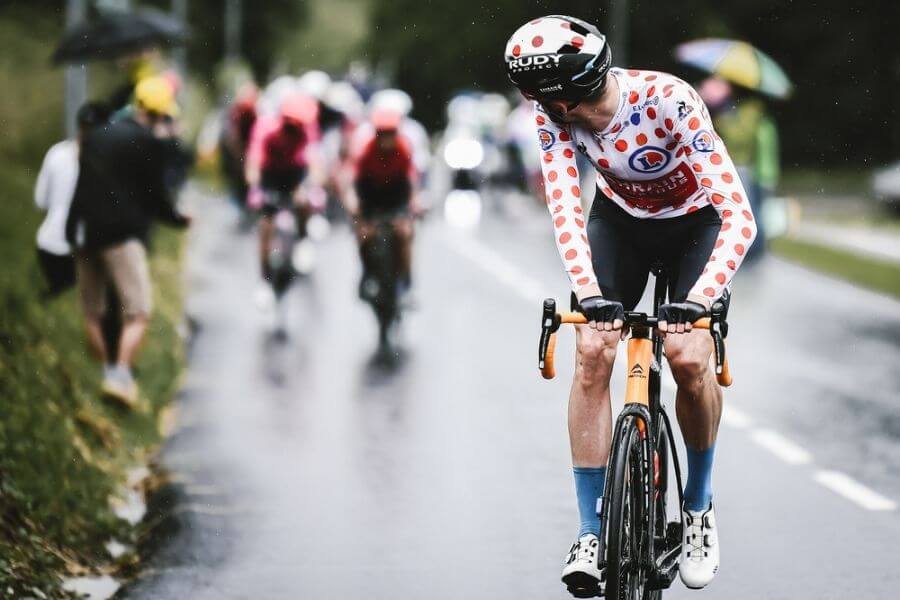
As in the case of Alpe D’Huez, the great Fausto Coppi was the first to conquer Dôme Puy in that triumphal edition of 1952, in which the Italian champion won the tour for the second time. Since that year, the central massif volcano was erected in a myth of the race, both because of the peculiarity of an increase without curves, which is surrounding the spiral mountain until reaching the summit, as for its extreme final hardness, with four kilometers touching an average slope of 12%.
The most emblematic mount in the Auvernia region has been the scene of great battles in the Tour de France, such as the one that starred with an elbow Jacques Anquetil and Raymond Poulidor with the leadership of the 1964 tour at stake, at a stage won by July Jiménez after a memorable ascent. Ávila's watchmaker collected the witness of the Spanish victories from Federico Martín Bahamontes, who in his 1959 Victorious Tour had swept the chrono -scallop to the Puy de Dôme by putting three and a half minutes to Anquetil, and a minute and a half to his great rival On the mountain, Charly Gaul.
The peculiar volcano was also the scene of one of the blackest episodes in the history of the Tour de France, when in the 1975 edition an exalted gave a punch to Eddy Merckx. The Belgian champion, who was yellow and looked for his sixth tour, was able to save his leadership, but two days later he paid the consequences with his historic sinking in Pra Loup.
Dôme's Puy remained a reference in the mountain until it stopped up Without the great myth of the central massif.
 Often the fan will have heard that this port scores out of category and that of beyond, second or third. The logic of each one immediately relates these categories to the degree of hardness of the increases, with the simple observation that the most demanding ports are those that are described with the lowest ordinary. And so it is: the Tour de France contemplates five categories that are going in crescendo, from the fourth category that catalogs the milder increases.
Thus, the third and second category dimensions will be the following levels, before completing the conventional scale with the first category ports.
But what about the fifth category that we have left? The Tour of France scored first -class to the most historical and demanding ports until the 1978 edition, but then the organization observed that the large number of increases scheduled with that cataloging equated the most historical ports and most demanding altimetric data, with others more bearable.
All were in the same sack of the first category, but there were differences of hardness on which it was necessary to intervene. The Tour de France decided to do so in 1979, when he created the Hors Catégorie - Category out to distinguish the Cols tougher and complement the conventional scale.
Often the fan will have heard that this port scores out of category and that of beyond, second or third. The logic of each one immediately relates these categories to the degree of hardness of the increases, with the simple observation that the most demanding ports are those that are described with the lowest ordinary. And so it is: the Tour de France contemplates five categories that are going in crescendo, from the fourth category that catalogs the milder increases.
Thus, the third and second category dimensions will be the following levels, before completing the conventional scale with the first category ports.
But what about the fifth category that we have left? The Tour of France scored first -class to the most historical and demanding ports until the 1978 edition, but then the organization observed that the large number of increases scheduled with that cataloging equated the most historical ports and most demanding altimetric data, with others more bearable.
All were in the same sack of the first category, but there were differences of hardness on which it was necessary to intervene. The Tour de France decided to do so in 1979, when he created the Hors Catégorie - Category out to distinguish the Cols tougher and complement the conventional scale.
 The mountain varies in each edition of the Tour de France: there are years with more hardness load in the Alps than in the Pyrenees, or vice versa; and others in which the secondary mountain ranges that constitute the central massif, the swearing or the vosgos have a weight comparable to that of either of the two main ones.
The number of mountain stages and their scheduled port density are the factors that determine global hardness, always making the precision that they are the runners themselves, with their rhythms and with their combativity, which finally have the last word at the time at the time to make a career more or less hard.
But there is a starting point. As with the ports, the stages are also classified, and they are even given a coefficient based on factors such as the accumulated slope that save, the total number of ports and the requirement of the increases that are located at the end, especially if they are of Hors Catégorie.
Under these premises, medium and high mountain stages can be differentiated, concepts that, rather than depending on the altitude that their qualifiers seem to point out, have to do with the accumulated hardness and its strategic location. There is no rigid norm, but it is accepted that a high mountain stage is the one that saves accumulated unevenness above 4,000 meters, programming at least two large ports and placing one of them as an end or, failing that, very near the goal.
In a tour there are usually several stages of these characteristics and the one that presents the highest alimetric data is the one considered as Queen stage, especially if it is also the one with the greatest mileage.
That the final stretch is hard is the key factor of the high mountain, since there have been cases in which the location far from colossal goal such as the Tourmalet or the Aubisque avoided such consideration. And on the opposite side, medium mountain stages have been made, plague demanding ending capable of encouraging attacks.
A highly remembered example is the famous stage of the 1995 Tour of France with end in Mende, where an offensive of the Eleven team put in check the yellow jersey of Miguel Induráin. Melchor Mauri, one of the pawns used by Manolo Sáiz in that choral attack, gave one of the keys: "Faced with a hard stage, people mentally have to suffer and endure to the fullest. But that day did not seem like a stage of excessive hardness, there were no large ports. The majority of runners did not go out with the mentality of having to suffer and that is why they did not endure the rhythm” What happened in the half mountain of the central massif teaches that there are times when everything is more a matter of mentality than of percentages and unevenness.
The mountain varies in each edition of the Tour de France: there are years with more hardness load in the Alps than in the Pyrenees, or vice versa; and others in which the secondary mountain ranges that constitute the central massif, the swearing or the vosgos have a weight comparable to that of either of the two main ones.
The number of mountain stages and their scheduled port density are the factors that determine global hardness, always making the precision that they are the runners themselves, with their rhythms and with their combativity, which finally have the last word at the time at the time to make a career more or less hard.
But there is a starting point. As with the ports, the stages are also classified, and they are even given a coefficient based on factors such as the accumulated slope that save, the total number of ports and the requirement of the increases that are located at the end, especially if they are of Hors Catégorie.
Under these premises, medium and high mountain stages can be differentiated, concepts that, rather than depending on the altitude that their qualifiers seem to point out, have to do with the accumulated hardness and its strategic location. There is no rigid norm, but it is accepted that a high mountain stage is the one that saves accumulated unevenness above 4,000 meters, programming at least two large ports and placing one of them as an end or, failing that, very near the goal.
In a tour there are usually several stages of these characteristics and the one that presents the highest alimetric data is the one considered as Queen stage, especially if it is also the one with the greatest mileage.
That the final stretch is hard is the key factor of the high mountain, since there have been cases in which the location far from colossal goal such as the Tourmalet or the Aubisque avoided such consideration. And on the opposite side, medium mountain stages have been made, plague demanding ending capable of encouraging attacks.
A highly remembered example is the famous stage of the 1995 Tour of France with end in Mende, where an offensive of the Eleven team put in check the yellow jersey of Miguel Induráin. Melchor Mauri, one of the pawns used by Manolo Sáiz in that choral attack, gave one of the keys: "Faced with a hard stage, people mentally have to suffer and endure to the fullest. But that day did not seem like a stage of excessive hardness, there were no large ports. The majority of runners did not go out with the mentality of having to suffer and that is why they did not endure the rhythm” What happened in the half mountain of the central massif teaches that there are times when everything is more a matter of mentality than of percentages and unevenness.
 We have talked about the rhythm of cyclists as a key factor that determines the real hardness of one stage, but it remains to be seen another of the most substantial consequences that can be supposed for the race: the call out of control.
All races include in their regulations some time limits to cover the tours and the Tour de France is no exception. Its time control of each stage fixed a time limit schedule that, if exceeded, causes the automatic disqualification of cyclists who have not fulfilled it.
This is a big problem for sprinches and those runners whose physiognomy is away from the finesse of the climbers, and forces them to handle a specific strategy to avoid elimination based on complying with the rule.
We have talked about the rhythm of cyclists as a key factor that determines the real hardness of one stage, but it remains to be seen another of the most substantial consequences that can be supposed for the race: the call out of control.
All races include in their regulations some time limits to cover the tours and the Tour de France is no exception. Its time control of each stage fixed a time limit schedule that, if exceeded, causes the automatic disqualification of cyclists who have not fulfilled it.
This is a big problem for sprinches and those runners whose physiognomy is away from the finesse of the climbers, and forces them to handle a specific strategy to avoid elimination based on complying with the rule.
 The list of the mythical ports of the Tour is never closed. Beyond the great classics that are already centenary, the race has been incorporating new increases in which episodes of great importance have taken place, even without the need to present a hardness of Hors Catégorie.
Minor ports such as Pra Loup or Les Arcs were respectively the sports tombs of two pentacampeones; Eddy Merckx and Miguel Induráin.
But as in football, where it is more beautiful to win in a great stadium and before a great team, sentence a Tour of France in a legendary port is something that gives that deed a very special touch.
We have chosen seven mythical ports that have been the scene of memorable episodes:
The list of the mythical ports of the Tour is never closed. Beyond the great classics that are already centenary, the race has been incorporating new increases in which episodes of great importance have taken place, even without the need to present a hardness of Hors Catégorie.
Minor ports such as Pra Loup or Les Arcs were respectively the sports tombs of two pentacampeones; Eddy Merckx and Miguel Induráin.
But as in football, where it is more beautiful to win in a great stadium and before a great team, sentence a Tour of France in a legendary port is something that gives that deed a very special touch.
We have chosen seven mythical ports that have been the scene of memorable episodes:
 The Tourmalet was the first major port to rise in the Pyrenees, and the first that led to the race above 2,000 meters, in the 1910 edition. Its great peculiarity is that its two aspects are practically symmetrical: from Luz Saint-Sauveur, 1,405 meters of slope are saved in 18.8 kilometers, at an average of 7.5%; While the ascent from Sainte Marie de Campan has 17.2 kilometers and saves 1,268 meters, at an average of 7.4%.
The Tour has crossed the great colossus near ninety times, the one in its history, almost always as a port of the stage of the late stage of stage in near Pyrenean localities, or of late classics, such as light burning or superbagnéres. Federico Martín Bahamontes holds the record of having crowned him in the lead four times, followed by great names such as Jean Robic (3), Julio Jiménez (3) or Fausto Coppi, who first went through his top in his two triumphal tours of 1949 and 1952 .
The great Pyrenean colossus also went down in history for his descent, when Miguel Induráin attacked in the first sections of the descent and began the great escape that led him to dress for the first time yellow in the goal of Val Louron.
The Tourmalet turned a hundred years in 2010 and the Tour of France decided to commemorate the ephemeris programming a double rise in two different stages. In the second it was the final race and won the Luxembourgs Andy Schleck, who entered Alberto Contador.
The Tourmalet was the first major port to rise in the Pyrenees, and the first that led to the race above 2,000 meters, in the 1910 edition. Its great peculiarity is that its two aspects are practically symmetrical: from Luz Saint-Sauveur, 1,405 meters of slope are saved in 18.8 kilometers, at an average of 7.5%; While the ascent from Sainte Marie de Campan has 17.2 kilometers and saves 1,268 meters, at an average of 7.4%.
The Tour has crossed the great colossus near ninety times, the one in its history, almost always as a port of the stage of the late stage of stage in near Pyrenean localities, or of late classics, such as light burning or superbagnéres. Federico Martín Bahamontes holds the record of having crowned him in the lead four times, followed by great names such as Jean Robic (3), Julio Jiménez (3) or Fausto Coppi, who first went through his top in his two triumphal tours of 1949 and 1952 .
The great Pyrenean colossus also went down in history for his descent, when Miguel Induráin attacked in the first sections of the descent and began the great escape that led him to dress for the first time yellow in the goal of Val Louron.
The Tourmalet turned a hundred years in 2010 and the Tour of France decided to commemorate the ephemeris programming a double rise in two different stages. In the second it was the final race and won the Luxembourgs Andy Schleck, who entered Alberto Contador.
 It was the first great Alpine colossus, introduced in the 1911 edition. Since then it has become the second port most used by the Tour, after the Tourmalet. The Galibier is considered the most strenuous port if it is faced from Saint Michel de Maurienne and is chained to the col du télégraphe.
For that northern slope dates back 1,933 meters of unevenness in 35 kilometers to 5.48%, an average slope that is distorted by the five kilometers of descent that carry from the top of the télégraphe to the town of Valloire. The differential section of the Galibier begins seven kilometers from the top, where the slope no longer drops from 8% and the altitude raises.
Three Spaniards, Bahamontes, Julio Jiménez and Federico Ezquerra, lead the palmarés with two steps in the head, matched with the Luxembourg Charly Gaul and the French Henry Pelissier and Honoré Barthélémy. And three Italians were exhibited on their ramps to win the Tour: Gino Bartali (1937), Fausto Coppi (1952) and Marco Pantani (1998), whose five kilometers attack of the top, missing seventy for the goal of Les Deux Alpes, It led to one of the most shocking deeds of the modern era of the Tour de France.
It was the first great Alpine colossus, introduced in the 1911 edition. Since then it has become the second port most used by the Tour, after the Tourmalet. The Galibier is considered the most strenuous port if it is faced from Saint Michel de Maurienne and is chained to the col du télégraphe.
For that northern slope dates back 1,933 meters of unevenness in 35 kilometers to 5.48%, an average slope that is distorted by the five kilometers of descent that carry from the top of the télégraphe to the town of Valloire. The differential section of the Galibier begins seven kilometers from the top, where the slope no longer drops from 8% and the altitude raises.
Three Spaniards, Bahamontes, Julio Jiménez and Federico Ezquerra, lead the palmarés with two steps in the head, matched with the Luxembourg Charly Gaul and the French Henry Pelissier and Honoré Barthélémy. And three Italians were exhibited on their ramps to win the Tour: Gino Bartali (1937), Fausto Coppi (1952) and Marco Pantani (1998), whose five kilometers attack of the top, missing seventy for the goal of Les Deux Alpes, It led to one of the most shocking deeds of the modern era of the Tour de France.
 The second most uploaded Pyrenean Puerto in the history of the Tour, since it premiered with the Tourmalet in 1910. Its summit already became famous that year with the historic phrase of Octave Lapize, cursing the organizers for including so much hardness.
The Aubisque presents its toughest slope from the town of Laruns, with 17.3 kilometers of 6.9% rise, average slope that exceeds 8% in its final seven kilometers, to save a total of 1,198 meters of unevenness.
On the other hand, the one that comes from ferriéres, the climb to Aubisque is chained to that of Col du Soulor, whose road is twelve of the twenty -one kilometers of ascension, hence the Pyrenean myth has come to score even second category.
Federico Martín Bahamontes spent four times first at his top and holds the record, followed by Charly Gaul, Julio Jiménez and Fausto Coppi. The Italian gave two climbing recitals on his ramps in his two triumphal tours of 1949 and 1952. Another great champion like Miguel Induráin also crossed him in the lead in 1989, before his five -tours stroke.
Its marked Port Port status has granted a more selective than decisive role, although two stage finals appear in its history: in 1985 Stephen Roche won a 52 -kilometer mini -tap; And in 2007 the Danish Michael Rassmussen did, before being disqualified by the organization for refusing to pass an anti -doping control.
The second most uploaded Pyrenean Puerto in the history of the Tour, since it premiered with the Tourmalet in 1910. Its summit already became famous that year with the historic phrase of Octave Lapize, cursing the organizers for including so much hardness.
The Aubisque presents its toughest slope from the town of Laruns, with 17.3 kilometers of 6.9% rise, average slope that exceeds 8% in its final seven kilometers, to save a total of 1,198 meters of unevenness.
On the other hand, the one that comes from ferriéres, the climb to Aubisque is chained to that of Col du Soulor, whose road is twelve of the twenty -one kilometers of ascension, hence the Pyrenean myth has come to score even second category.
Federico Martín Bahamontes spent four times first at his top and holds the record, followed by Charly Gaul, Julio Jiménez and Fausto Coppi. The Italian gave two climbing recitals on his ramps in his two triumphal tours of 1949 and 1952. Another great champion like Miguel Induráin also crossed him in the lead in 1989, before his five -tours stroke.
Its marked Port Port status has granted a more selective than decisive role, although two stage finals appear in its history: in 1985 Stephen Roche won a 52 -kilometer mini -tap; And in 2007 the Danish Michael Rassmussen did, before being disqualified by the organization for refusing to pass an anti -doping control.
 The Izoard is one of the icons of the Tour de France, since Henri Desigrange would premiere in 1922 and the Belgian Philippe Thys, triple champion in Paris, inaugurated his record.
Its most emblematic and famous increase is carried out from the Alpina town of Guillestre, with sixteen kilometers at 6.9% on average to save 1,060 meters of unevenness. It is the aspect of the Casse Déserte, a development that marks the beginning of the very hard final stretch, and in which the monuments to Fausto Coppi and Louison Bobet, the Triple French champion of the Tour that is also the one who has crowned the Alpine colossus in the lead, three times.
Coppi did it in his triumphal tour of 1949 in a legendary escape on the way to Aosta and repeated in 1951. And his great rival, Gino Bartali, he got it before and after World War II, in 1938 and 1948, the years in which He proclaimed winner in Paris.
Julián Berrendero, Jean Robic, Bahamontes, José Manuel Fuente, Eddy Merckx, Lucien van Impe or Claudio Chiappucci are some of the names that complete the Izoard history.
The Izoard is one of the icons of the Tour de France, since Henri Desigrange would premiere in 1922 and the Belgian Philippe Thys, triple champion in Paris, inaugurated his record.
Its most emblematic and famous increase is carried out from the Alpina town of Guillestre, with sixteen kilometers at 6.9% on average to save 1,060 meters of unevenness. It is the aspect of the Casse Déserte, a development that marks the beginning of the very hard final stretch, and in which the monuments to Fausto Coppi and Louison Bobet, the Triple French champion of the Tour that is also the one who has crowned the Alpine colossus in the lead, three times.
Coppi did it in his triumphal tour of 1949 in a legendary escape on the way to Aosta and repeated in 1951. And his great rival, Gino Bartali, he got it before and after World War II, in 1938 and 1948, the years in which He proclaimed winner in Paris.
Julián Berrendero, Jean Robic, Bahamontes, José Manuel Fuente, Eddy Merckx, Lucien van Impe or Claudio Chiappucci are some of the names that complete the Izoard history.
 The colossus of Provence is a separate mountain, although geologically belongs to the Alps, and perhaps it is the most peculiar of the tour.
It is a bushy mountain due to the strong Mistral wind that plagues the area, crowned by a military observatory and surrounded by lavender fields.
Because of its hardest slope, from the town of Bedoin, saves 1,588 meters of unevenness in 21.3 kilometers of ascent to 7.4%, an average slope that hardens above 10% in the final stretch, once it is exceeds the famous villa Reynard.
The Mont Ventoux began to rise in 1951 and in his record there are big names, such as those of Jean Robic, Louison Bobet, Charly Gaul, Raymond Poulidor, Eddy Merckx, Marco Pantani or Chris Froome.
The call Provence giant It has served to clarify the general classification and to crown large champions at its top, but much of its fame is due to the most tragic and dramatic side of cycling: the British champion, Tom Simpson, died on his ramps in 1967 because of An amphetamine overdose mixed with alcohol that had lethal effects when combined with extreme effort and heat.
In 1970, Eddy Merckx needed an oxygen mask as soon as he won at his top. In 2000, the victory of Marco Pantani in the final sprint against Lance Armstrong resulted in a great anger from Italian with the American, to say publicly that he had let him win.
And in 2016, the great public agglomeration at the climb caused Chris Froome to rise a section running on foot after colliding with his bike against a television motorcycle.
The colossus of Provence is a separate mountain, although geologically belongs to the Alps, and perhaps it is the most peculiar of the tour.
It is a bushy mountain due to the strong Mistral wind that plagues the area, crowned by a military observatory and surrounded by lavender fields.
Because of its hardest slope, from the town of Bedoin, saves 1,588 meters of unevenness in 21.3 kilometers of ascent to 7.4%, an average slope that hardens above 10% in the final stretch, once it is exceeds the famous villa Reynard.
The Mont Ventoux began to rise in 1951 and in his record there are big names, such as those of Jean Robic, Louison Bobet, Charly Gaul, Raymond Poulidor, Eddy Merckx, Marco Pantani or Chris Froome.
The call Provence giant It has served to clarify the general classification and to crown large champions at its top, but much of its fame is due to the most tragic and dramatic side of cycling: the British champion, Tom Simpson, died on his ramps in 1967 because of An amphetamine overdose mixed with alcohol that had lethal effects when combined with extreme effort and heat.
In 1970, Eddy Merckx needed an oxygen mask as soon as he won at his top. In 2000, the victory of Marco Pantani in the final sprint against Lance Armstrong resulted in a great anger from Italian with the American, to say publicly that he had let him win.
And in 2016, the great public agglomeration at the climb caused Chris Froome to rise a section running on foot after colliding with his bike against a television motorcycle.
 The most famous end began his journey in the Tour de France, with a great escalator exhibition by Fausto Coppi against Jean Robic to win alone at the top and leave his second absolute victory in Paris for sentence.
Il Campionissimo Inaugurated the Alpe D’Huez record in 1952, the year the Tour decided to raise the spectacular port for the first time.
The ascent starts in Bourg- d’aisans and in 13.1 kilometers saves a slope of 1,073 meters, at an average of 8.2%, in a serpent with twenty-one horseshoe curves numbered in decreasing order from the base to the top. Each one remembers the winners in a sign, some twice, since the number of winners began to overcome that of the curves.
Although it seems weird, Alpe d’Huez's horseshoes are a small relief for cyclists, because they do not have barely inclination. The worst of the ascension is each exit from them to the next line, where the percentages are triggered to around 10%.
The most famous end began his journey in the Tour de France, with a great escalator exhibition by Fausto Coppi against Jean Robic to win alone at the top and leave his second absolute victory in Paris for sentence.
Il Campionissimo Inaugurated the Alpe D’Huez record in 1952, the year the Tour decided to raise the spectacular port for the first time.
The ascent starts in Bourg- d’aisans and in 13.1 kilometers saves a slope of 1,073 meters, at an average of 8.2%, in a serpent with twenty-one horseshoe curves numbered in decreasing order from the base to the top. Each one remembers the winners in a sign, some twice, since the number of winners began to overcome that of the curves.
Although it seems weird, Alpe d’Huez's horseshoes are a small relief for cyclists, because they do not have barely inclination. The worst of the ascension is each exit from them to the next line, where the percentages are triggered to around 10%.
 As in the case of Alpe D’Huez, the great Fausto Coppi was the first to conquer Dôme Puy in that triumphal edition of 1952, in which the Italian champion won the tour for the second time. Since that year, the central massif volcano was erected in a myth of the race, both because of the peculiarity of an increase without curves, which is surrounding the spiral mountain until reaching the summit, as for its extreme final hardness, with four kilometers touching an average slope of 12%.
The most emblematic mount in the Auvernia region has been the scene of great battles in the Tour de France, such as the one that starred with an elbow Jacques Anquetil and Raymond Poulidor with the leadership of the 1964 tour at stake, at a stage won by July Jiménez after a memorable ascent. Ávila's watchmaker collected the witness of the Spanish victories from Federico Martín Bahamontes, who in his 1959 Victorious Tour had swept the chrono -scallop to the Puy de Dôme by putting three and a half minutes to Anquetil, and a minute and a half to his great rival On the mountain, Charly Gaul.
The peculiar volcano was also the scene of one of the blackest episodes in the history of the Tour de France, when in the 1975 edition an exalted gave a punch to Eddy Merckx. The Belgian champion, who was yellow and looked for his sixth tour, was able to save his leadership, but two days later he paid the consequences with his historic sinking in Pra Loup.
Dôme's Puy remained a reference in the mountain until it stopped up Without the great myth of the central massif.
As in the case of Alpe D’Huez, the great Fausto Coppi was the first to conquer Dôme Puy in that triumphal edition of 1952, in which the Italian champion won the tour for the second time. Since that year, the central massif volcano was erected in a myth of the race, both because of the peculiarity of an increase without curves, which is surrounding the spiral mountain until reaching the summit, as for its extreme final hardness, with four kilometers touching an average slope of 12%.
The most emblematic mount in the Auvernia region has been the scene of great battles in the Tour de France, such as the one that starred with an elbow Jacques Anquetil and Raymond Poulidor with the leadership of the 1964 tour at stake, at a stage won by July Jiménez after a memorable ascent. Ávila's watchmaker collected the witness of the Spanish victories from Federico Martín Bahamontes, who in his 1959 Victorious Tour had swept the chrono -scallop to the Puy de Dôme by putting three and a half minutes to Anquetil, and a minute and a half to his great rival On the mountain, Charly Gaul.
The peculiar volcano was also the scene of one of the blackest episodes in the history of the Tour de France, when in the 1975 edition an exalted gave a punch to Eddy Merckx. The Belgian champion, who was yellow and looked for his sixth tour, was able to save his leadership, but two days later he paid the consequences with his historic sinking in Pra Loup.
Dôme's Puy remained a reference in the mountain until it stopped up Without the great myth of the central massif.












